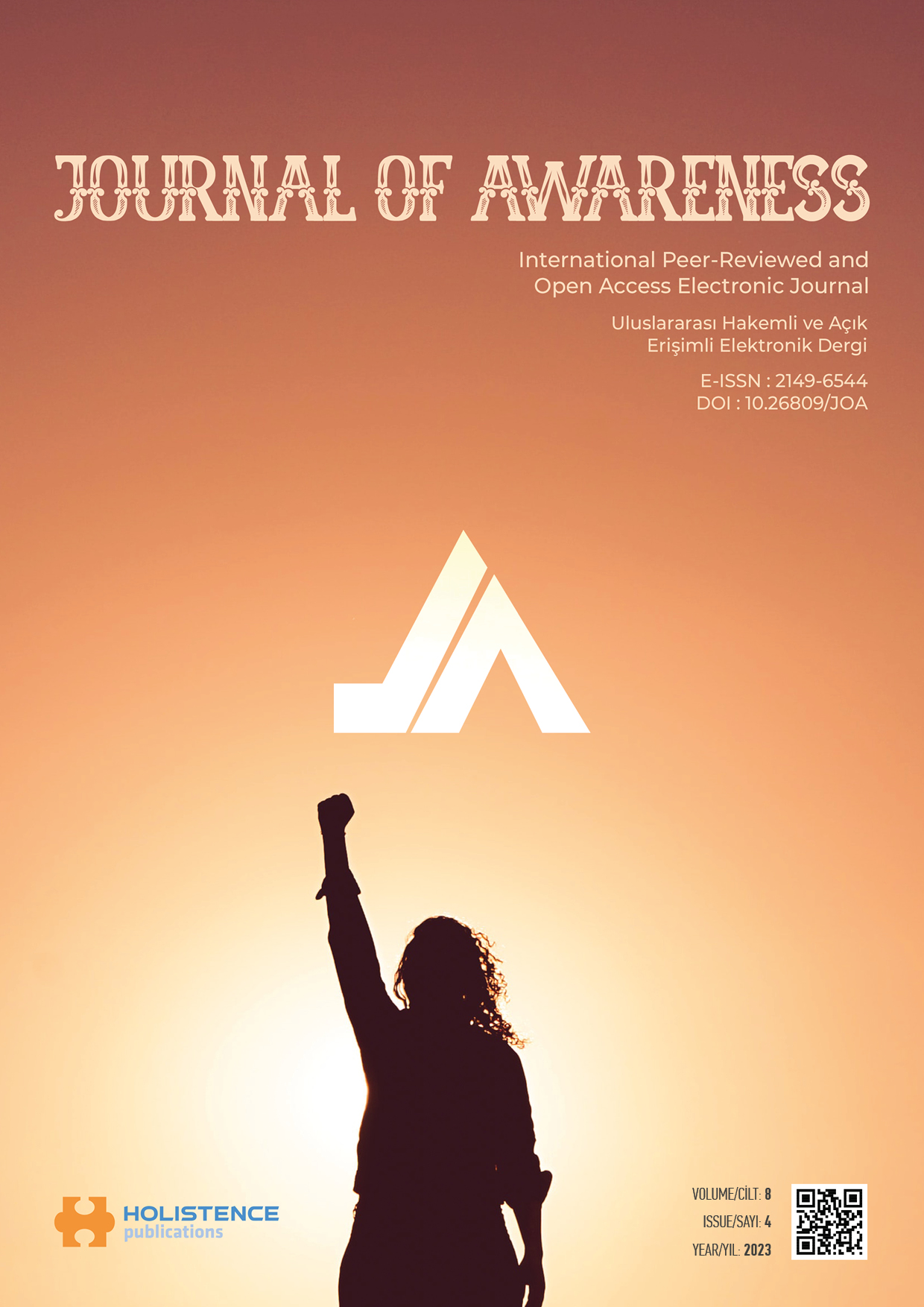A Prologue to apology and futurism: Projections of nineteenth-century American Historicism in Nathaniel Hawthorne’s “The Custom-House”
DOI:
https://doi.org/10.26809/joa.2144Anahtar Kelimeler:
Nathaniel Hawthorne- "The Custom-House" - Nineteenth-Century American Historicism- Apology and FuturismÖzet
Distracted by the contesting political debates between aristocratic republicanism of the Revolutionary era and democratic republicanism of the Antebellum; Nathaniel Hawthorne’s narrative tone in his prologue, “The CustomHouse” carries out the ideological assets of nineteenth-century American historicism in accord with which he laid ahistorical fictional elements failing to portray the entirety of early colonial New England in his 1850 novel, The Scarlet Letter. In this respect, “The Custom-House” portrays Nathaniel Hawthorne’s Romantic projections aimed at consoling the contemporaneous polarization on the futurity of the nation as much as his redemptive quest for his ancestral past in colonial Salem. Thus, as the dean of American Renaissance authors and a fervent Romantic, Nathaniel Hawthorne’s concern for an absolute-oriented moral vision, his apologetic perspective of the past, and his affirmative tone for the futurity of American democracy are most out loud in his writing. This study aims to focus on Hawthorne’s apologetic and futurist projections of nineteenth-century American historicism in his prologue, “The Custom-House” for his 1850 novel, The Scarlet Letter, concerning his responses to the anxieties of Antebellum America.
İndirmeler
Referanslar
BRADLEY, A. (2008). Derrida’s Of Grammatology. Edinburg: Edinburgh University Press.
BROADHEAD, R.H. (1986). The School of Hawthorne. NY: Oxford University Press.
COX, J.M. (1975). “The Scarlet Letter: Through The Old Manse and The Custom House.” The Virginia Quarterly Review. Vol. 51, No. 3, pp. 432-447. https://www.jstor.org/stable/26435686. Accessed on 25 August 2023.
DERRIDA, J. (1976). Of Grammatology. Gayatri Chakravorty Spivak (trans.). Baltimore: The Johns Hopkins University Press.
ERKAL, M. M. (2017). “The Cultural History of the Corset and Gendered Body in Social and Literary Landscapes.” European Journal of Language and Literature, 3(3),109–118. https://doi.org/10.26417/ejis.v9i1.p153-153. Accessed on 21 July 2023.
FOUCAULT, M. (1974). The Archaeology of Knowledge and The Discourse on Language. A. M. Sheridan Smith (trans.). NY: Pantheon Books.
. . . (1975). Discipline and Punish the Birth of the Prison. Vintage Books.
GREEN, C. (1980). “The Custom-House: Hawthorne's Dark Wood of Error. “The New England Quarterly. Vol. 53, No. 2, pp. 184-195. https://www.jstor.org/stable/365169. Accessed on 19 August 2023.
HAWTHORNE, N. (1994). “The Custom-House.” The Scarlet Letter. NY: Dover Publications.
KANT, I. (2001). “Critique of Judgement.” The Norton Anthology of Theory and Criticism. Vincent B. Leitch, (ed). NY:W.W. Norton & Company, pp. 504 -582.
KRISTEVA, J. (1982). Powers of Horror: An Essay on Abjection. Leon S. Roudiez (trans.). Colombia University Press.
MELVILLE, H. (1850). “Hawthorne and His Mosses.” The Literary World. Hawthorne and His Mosses, by Melville, 1850 (ibiblio.org) Accessed on 28 July 2023.
McMANUS, E.J. (1993). Law and Liberty in Early New England: Criminal Justice and Due Process, 1620-1692. Amherst: The University of Massachusetts Press.
NEWBERRY, F. (1987). “A Red-Hot A and a Lusting Divine: Sources for The Scarlet Letter.” The New England Quarterly. Vol. 60, No. 2, pp. 256-264. https://www.jstor.org/stable/365609. Accessed on 11 August 2023.
ROSS, D. (1984). “Historical Consciousness in Nineteenth-Century America.” The American Historical Review. Vol. 89, No. 4, pp. 909- 928. https://www.jstor.org/stable/1866398. Accessed on 11 August 2023.
ROSS, R. J. (1993). “The Legal Past of Early New England: Notes for the Study of Law, Legal Culture, and Intellectual History.” The William and Mary Quarterly, vol.50, no.1,1993, pp.28–41. www.jstor.org/stable/2947234. Accessed on 13 September 2017.
SHALHOPE, R. E.(1982). “Republicanism and Early American Historiography.” The William and Mary Quarterly. Vol. 39, No. 2, pp. 334-356. http://www.jstor.com/stable/1918756. Accessed on 25 August 2023.
TREPANIER,L.(2012).“Hawthorne’s Counterfeiting History in The Scarlet Letter.” http://anamnesisjournal.com/2012/01/lee-trepanier-2/#more-41. Accessed on 20 August 2023.
VICO, G. (1999). New Science. NY: Penguin Books.
WELDON, R.F. (1978). "The Old Manse" to "The Custom-House": The Growth of the Artist's Mind.” Texas Studies in Literature and Language. Vol. 20, No. 1, pp. 36-47. Published by: https://www.jstor.org/stable/40754520. Accessed on 25 August 2023.
WHITE, G.E. (1991). The Marshall Court and Cultural Change 1815-1835. NY: Oxford University Press.
İndir
Yayınlanmış
Nasıl Atıf Yapılır
Sayı
Bölüm
Lisans
Telif Hakkı (c) 2023 Holistence Publications

Bu çalışma Creative Commons Attribution 4.0 International License ile lisanslanmıştır.
Yazarlar, makale Journal of Awareness’de yayınlanmak üzere kabul edildiğinde.makalenin içeriğindeki tüm telif haklarını, Rating Academy Ar-Ge Yazılım Yayıncılık Eğitim Danışmanlık ve Organizasyon Ticaret Ltd. Şti’ne devrederler. Yazarlar, patent hakları gibi telif hakkı dışındaki tüm mülkiyet haklarını saklı tutar.
Bu makalede yazar olarak listelenen herkes çalışmaya önemli, doğrudan, entelektüel katkılar yapmış olmalı ve bunun için kamu sorumluluğu almalıdır.
Bu makale daha once yayınlanmamış ve başka dergilerde yayınlanmak üzere gönderilmemiştir.










